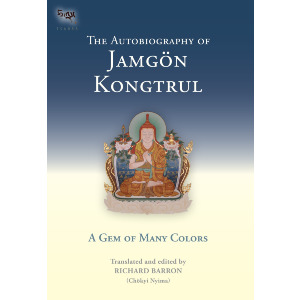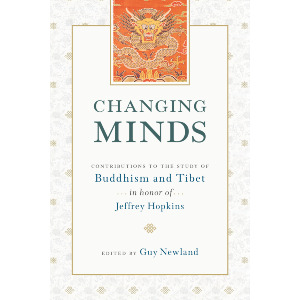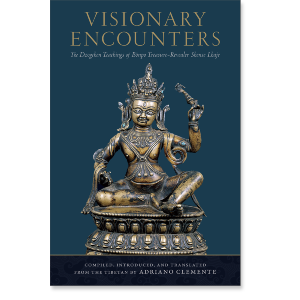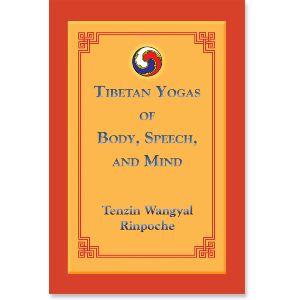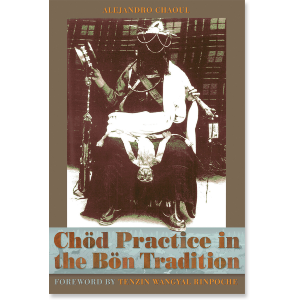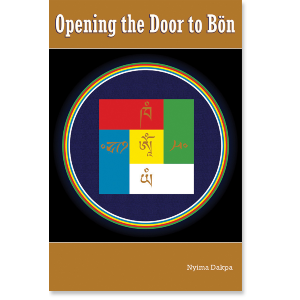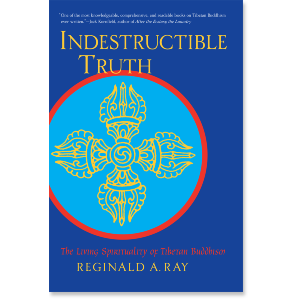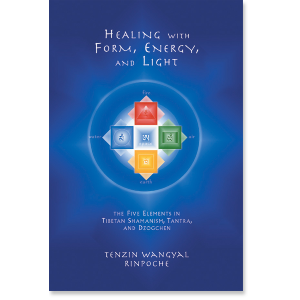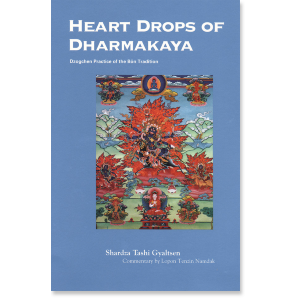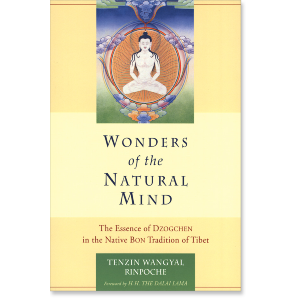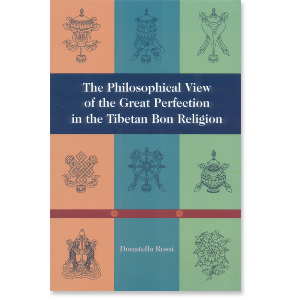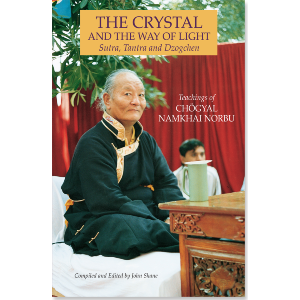| The following article is from the Spring, 2002 issue of the Snow Lion Newsletter and is for historical reference only. You can see this in context of the original newsletter here. |
THE FIVE ELEMENTS IN TIBETAN SHAMANISM, TANTRA, AND DZOGCHEN
by Tenzin Wangyal Rinpoche 176 pp., 5 photos, 30 line drawings, glossary, bibliography. #HEWIFO $16.95
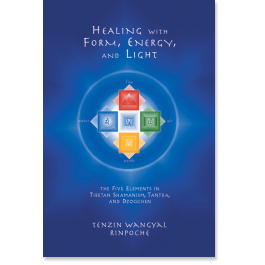
Tenzin Rinpoche's purpose is to strengthen our connection to the sacred aspect of the natural world and to present a guide that explains why certain practices are necessary and in what situations practices are effective or a hindrance. This is a manual for replacing an anxious, narrow, uncomfortable identity with one that is expansive, peaceful, and capable. And the world too is transformed from dead matter and blind processes into a sacred landscape filled with an infinite variety of living forces and beings.
There is more detailed and at the same time easily understood and useful information about the body and meditative practice than any other book I have seen. Spoken with an elegance that melts into your mind.Anne C. Klein, Professor, Dept of Religious Studies, Founding Director, Dawn Mountain Tibetan Temple, Houston, author of Knowledge and Liberation, Meeting the Great Bliss Queen, Path to the Middle
Tenzin Wangyal Rinpoche is one of the few Bon masters now living in the West. His skill as a teacher reflects his more than 15 years in guiding Western practitioners. He is the founder and director of the Ligmincha Institute in Charlottesville, Virginia, and is the author of The Tibetan Yogas of Dream and Sleep and Wonders of the Natural Mind.
RELATING TO NON-PHYSICAL BEINGS
Doing the ritual practices is not like going to a doctor and getting a pill. Healing is something we can do for ourselves. We need to learn to protect ourselves from illness and negativity. One way to do this is through making offerings, which pacifies spirits and also develops generosity and compassion.
In the following practices, we ritually invite four levels of guests to attend. We have a different relationship with each type of guest.
First Guests
The first guests are the fully enlightened beings, the buddhas and bod- hisattvas and enlightened masters.
Included are the tutelary deities (yidam), fully realized goddesses (khandro), and all beings who are free of ignorance and who have perfected the five wisdoms. These guests we do not control. We don't tell them what to do-we ask for their blessings.
First guests are always invited in meditation practice. They are the beings to whom we bow when doing prostrations and to whom we turn for refuge. Energy is needed for healing and it is important to connect with the right source for that energy and have the right relationship with that source. The best source is the first guest.
Second Guests
The guests of the second level are generally not fully enlightened but are nevertheless powerful. They are beings from the god realms, beings in the retinues of major deities, guardians, and dharma protectors. Second guests may include powerful beings from any realm of existence. In the Western tradition, angels are considered powerful beings, often frightening to encounter; these would be considered second guests. Also included would be spirits associated with planets. In the West we don't think of the planets as beings, but they are: the moon embodies a being as do the sun and the other planets.
Many healing practices are done with the help of the second guests and we treat them with respect and devotion.
Third Guests
The guests of the third level are all those beings with whom we have karmic connections and the bemgs from the eight classes that I described earlier. This means everyone with whom we have connected and with whom we still have karma-friends and enemies from this lifetime and all previous lifetimes. It doesn't have to be a negative thing that connects us; it can be something that simply needs to be completed. However, as this practice is about healing, it's most important to invite the beings with whom we have a connection in need of healing. A karmic debt means a karmic connection. For example, in the business world two people may run into difficulties with each other but because of the circumstances are unable to let the relationship go. Or there are people who seem to be intent on making things difficult for us or who irritate us for no reason. Such situations indicate a karmic debt.
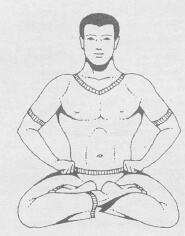
The more the spirits connected to us are happy, the happier our lives. This is true on every level. When the beings around us are happy-neighbors, spouses, friends, children, the people we work with-it makes us happy. When a person we are connected with is not happy, often he or she wants happiness from us. And often we don't know what we can give-and sometimes we can't give, or we don't want to give. And then we have a problem.
Many of the disturbances and obstacles we encounter in life have to do with interference from the karmic guests. Just as we can have trouble in life with a neighbor or colleague with whom we have a bad relationship, so it is with non-physical beings. When there is a problem, it isn't helpful to think it is the fault of the other, whether human or spirit. It's better to realize there is something that needs to be done, something we have to do. Like us, the spirit would rather not be involved in a disturbance.

Healing is something we can do for ourselves. We need to learn to protect ourselves from illness and negativity. One way to do this is through making offerings, which pacifies spirits and also develops generosity and compassion.
Ritual practice is a way to finish the disturbance. Through it, debts can be paid. That's the principle in shamanic practices. We can heal these connections through ceremonies, offerings, burning food, or offering smoke, as described below.
Fourth Guests
The fourth guests are the guests of compassion. These are the beings who are weaker than we are and who can benefit from our help. In the Bon shamanic tradition it is important to develop compassion as the foundation for practice.
A motivation to do shamanic practice that is based on having some kind of spiritual adventure or becoming distinguished as a special person will not be helpful. It seems to me that many of the current shamanic traditions don't have true stages of growth. Drumming and taking journeys, leaving the body and having imaginal experiences, seem to be what is considered important. But if that's all there is, it might be more helpful for the practitioners to have vivid in-the-body experiences.
If the motivation is a desire to help others, to heal and alleviate suffering, then the intention is based on compassion. In this case shamanic practice will grow and lead naturally into the higher practices.
Similarly, beings in the spirit realms can want or need something from us and we don't know how to give it to them. We don't realize that we can give something non-physical. In the West, material is valued. It's harder to value gifts that are immaterial though we know how important they are. To be given love, trust, respect, honesty, and friendship by others is of great value; it's more than money can buy. Spirits are non-physical and can be satisfied with non-physical offerings. The best basis for these offerings is compassion.
MAKING OFFERINGS
In all traditions of Tibetan spiritual practice, offerings are regularly made to spirits. The mandala offering, part of the foundational practices of Bon as well as the four schools of Tibetan Buddhism, is an offering to the first and second guests. The practice of chod is an offering to all four guests and particularly to karmic guests. The dedication of merit that follows every practice is an offering to all, particularly the lower three guests who are still in samsara. We offer the food we eat and whatever we drink. We offer what is beautiful to those above us. We offer our wastes to whomever can benefit from them. Everything can be offered; the only limit is whatever limit we impose. In the causal vehicles a large number of offering practices are described.
Some offering rituals are very elaborate, involving many days of preparation. The offerings can include all kinds of food, torma (figures made from parched and dyed barley flour), alcohol, specially prepared texts, precious jewels and stones, long prayers, repetitions of mantras, and many other materials. Offerings can also be made from left-over food at dinner, or made wholly in the imagination. Although most often we simply make offerings through visualization, it is also good to make substantial offerings. It helps to focus the ritual and makes it more profound.
With some practices like soul retrieval we are recovering what is lost or healing what is damaged and making offerings is part of these practices. But we should also regularly make offerings even when everything is fine. We can make offerings to maintain harmony with non-physical beings in order to keep them from creating obstacles, to ask them to remove obstacles that already exist, to be of benefit to the spirits, to request their support in worldly and spiritual matters, to honor our obligations to protectors and guardians and tantric deities, and to develop generosity in ourselves.
Although I won't go into great detail on offering practices, I have included information on some of the ways we make regular offerings.
One offering is called chang bu, a fingerprint torma. This can be done for oneself or for another person. The torma is made from barley flour and water, although another flour can be substituted. A dough is made, not so wet as to become sticky but wet enough to hold a shape. It is shaped into a thick roll and squeezed in the hand as if the hand were squeezing a tube. A little oil is put on the hand first so that the dough will not stick. Men use the right hand, women the left. The dough takes on the imprint of the hand, marked with ridges and knots where the dough is squeezed into the wrinkles of the palm and the seams where the fingers lie beside each other. We correlate the impressions of the five fingers to the five elements and the lines in the dough made by the bends in the fingers to the sense offerings.
Once the dough is shaped it is touched to any part of the body that needs healing. Touch on the body draws attention to the place touched; prana follows the attention since mind and prana always move together. With the attention on a single part of the body, sensation in that part increases. We can experience this by touching any place on our bodies and putting our attention there. When this is done with the chang bu, we use our imagination to draw the illness, trauma, or negativity into the dough. We should then try to feel a release in that area of the body. Then we can move the torma to another part of the body that needs healing. When we have finished, we have a substantial symbol of our illnesses, one that is energetically connected to us; this is offered to the third and fourth guests, the beings who may be causing and maintaining the illness. The intent behind the ritual is not only to remove the influence of the spirit from the body, but also to give the spirit something, which is done through the offering. What is given has some of the energetic properties of the illness but it is now in a purer form that will nourish and satisfy the spirit. When it accepts the offering it leaves the person whom it has afflicted.
After the ritual is finished, the offering is taken outside and thrown in the direction opposite the individual's birth year sign, the direction, it is believed, in which the negative force is most likely to originate. (If you don't know your sign, refer to the chart at the end of this book.) Traditionally, after a ritual like this we look for a dream that signifies success, such as a dream of insects, animals, liquid, or other beings or negative substances coming out of the body. ä_æ


